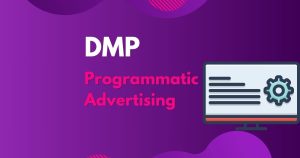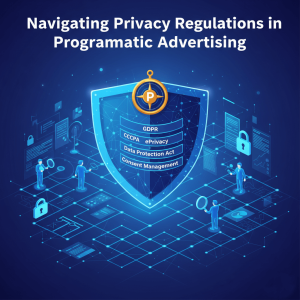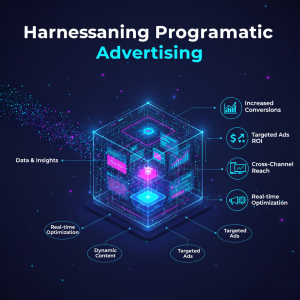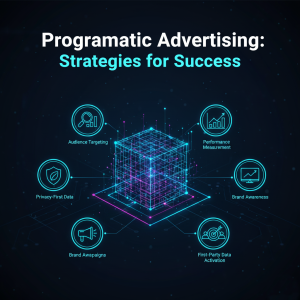How to Get Started with Programmatic Advertising

Programmatic advertisements have changed the method of businesses in digital marketing. If you search for this data-driven approach for the first time, you can question how it works, what equipment you need, and how to maximize capacity.
What is Programmatic Advertising?
At its core, programmatic advertising is the automatic shopping for and promoting of virtual ad inventory. This manner includes leveraging generation and real-time facts to bid on and show commercials to focused audiences across platforms. Instead of manually negotiating advert placements with publishers, programmatic platforms manage the heavy lifting in milliseconds.
The technology evaluates more than one signal, along with consumer behavior, demographics, and device type, to ensure that your commercials reach the right man or woman at the proper time.
Why is Programmatic Advertising Important?
Programmatic advertising is now a staple of modern marketing, and for good reason. Here’s why it’s so effective:
- Granular Targeting: Reach highly specific audiences based on data like browsing behavior, purchase history, geography, and even time of day.
- Efficiency: Automation reduces manual processes, saving you time and resources.
- Real-time Optimization: Algorithms adjust and optimize placements while your campaign runs, ensuring maximum ROI.
- Scalability: Whether you’re targeting local customers or a global audience, programmatic makes it easy to scale your efforts.
With these advantages, businesses can achieve higher ad relevance, improved engagement rates, and better ROI.
How Programmatic Advertising Works
While programmatic advertising might sound complex, its process is fairly straightforward when broken down. Here’s a simplified explanation of how it all works:
- The Advertiser specifies campaign goals, such as targeting audience segments, desired KPIs, and budget through a demand-side platform (DSP).
- The DSP evaluates available ad inventory across supply-side platforms (SSPs) and ad exchanges in real-time to find placements that meet the advertiser’s goals.
- An Auction Takes Place in milliseconds, with multiple advertisers bidding for the same inventory. The highest bid wins, and the winning ad is served to the user.
- Measure and Optimize your campaign’s performance by analyzing metrics like impressions, click-through rates (CTR), and conversions. AI and machine learning tools can help refine your campaign even further.
Now that you understand the basics, let’s discuss the actionable steps to get started.
5 Steps to Get Started with Programmatic Advertising
1. Define Your Campaign Goals and KPIs
Start by asking, “What do I want to achieve with this campaign?” Your goals could include increasing brand awareness, driving website traffic, or boosting conversions. Based on your objectives, outline clear KPIs.
For example:
- Brand awareness campaigns might measure impressions.
- Traffic campaigns focus on click-through rates (CTR).
- Lead generation campaigns target cost per acquisition (CPA).
Having specific goals will help you stay focused and measure progress effectively.
2. Choose a Demand-Side Platform (DSP)
A DSP is an essential tool for running programmatic campaigns. It allows advertisers to bid on ad inventory in real-time. Popular DSPs include Google Display & Video 360, The Trade Desk, and MediaMath.
When selecting a DSP, consider the following:
- Ease of Use: Is the interface user-friendly?
- Audience Targeting: Do the platform’s capabilities align with your targeting needs?
- Integration Options: Can it support your existing martech stack (like Google Analytics)?
- Budget: Evaluate the pricing structure to ensure it fits your campaign budget.
Some DSPs even cater to specific industries, so do your research to find the best fit.
3. Create Data-Driven Audience Segments
Programmatic’s strength lies in its ability to deliver hyper-targeted ads. To make the most of this, you need to build your audience segments thoughtfully.
- Use first-party data (like website behavior and email engagement).
- Supplement it with third-party data for richer insights into demographics and interests.
- Include retargeting segments to re-engage users already familiar with your brand.
Pro Tip: Stay compliant with privacy laws such as GDPR or CCPA when collecting and using customer data.
4. Design Engaging Creatives
Even with the most accurate targeting and strategy, your campaign’s success hinges heavily on your ad creatives.
Follow these best practices:
- Keep It Visual: Use high-quality, eye-catching images or animations.
- Prioritize Messaging: Ensure your primary message is clear within 2-3 seconds.
- Optimize for Multiple Formats: Design for different platforms and device types (desktop, mobile, etc.).
Test multiple variations of your ads (A/B testing) to determine what resonates best with your audience.
5. Monitor, Optimize, and Scale
A programmatic campaign requires ongoing attention. Use real-time data to monitor performance and make adjustments as needed.
Key metrics to track include:
- CTR (Click-Through Rates)
- Conversion Rates
- Viewability (Percent of the ad that was visible on screen)
- Ad Frequency (to avoid overexposing your audience).
Leverage the DSP’s machine learning algorithms to identify opportunities for further efficiency and performance improvements. Once you’re confident in your results, you can scale the campaign by increasing your budget or expanding your targeting.
How to Avoid Common Pitfalls
When getting started with programmatic advertising, keep these challenges in mind:
- Ad Fraud: Use pre-vetted ad exchanges and implement fraud detection tools to ensure your ad dollars aren’t wasted.
- Low-Quality Inventory: Select premium publishers to ensure your ad shows up in quality environments.
- Over-Targeting: While hyper-targeting can be effective, overly narrow segments may lead to higher costs or limited impressions.
By staying proactive and adaptable, you’ll avoid many roadblocks.
Is Programmatic Advertising Right for You?
Programmatic advertising may be a powerful device; however, it may not be healthy for every business. It’s most effective for agencies with established digital marketing strategies and the assets to invest in fact series and evaluation. For smaller corporations or beginners, it can nonetheless be treasured, however may require partnering with a company that specializes of programmatic campaigns to start robust.
Take the First Step Toward Smarter Advertising
Programmatic advertising is not just a trend; This is the future of digital marketing. By taking advantage of automation, real-time data, and accurate targeting, this strategy ensures efficiency and adapted returns for your advertising expenses.
Whether you start with scratches or want to refine your campaigns, the benefits of programming are obvious. By defining your goals, start choosing the right tools and designing impressively creative. From there, see that this innovative approach changes access, commitment, and results.
Are you ready to jump? Begin small, test often, and learn as you walk. Your smart advertising strategy begins today!








